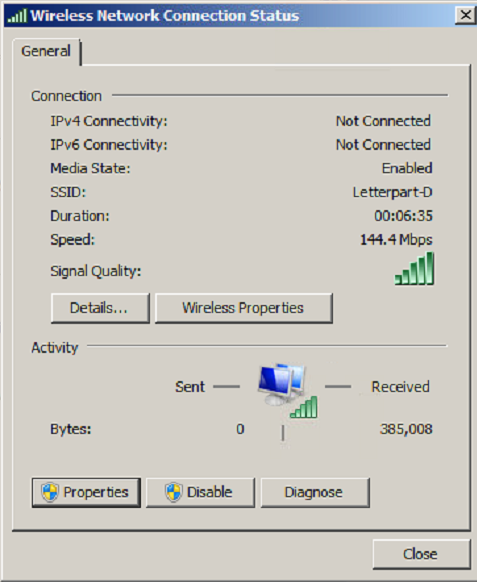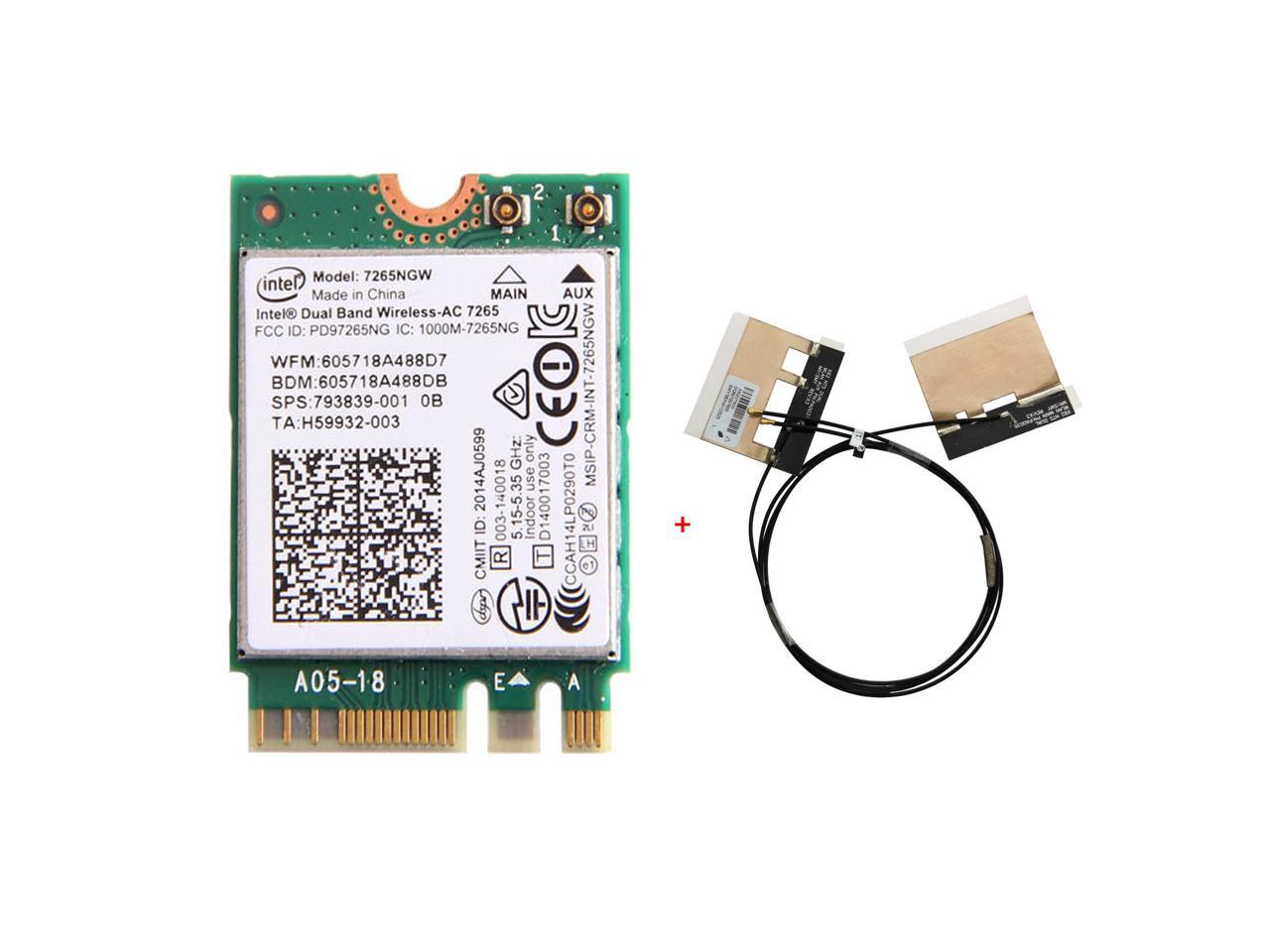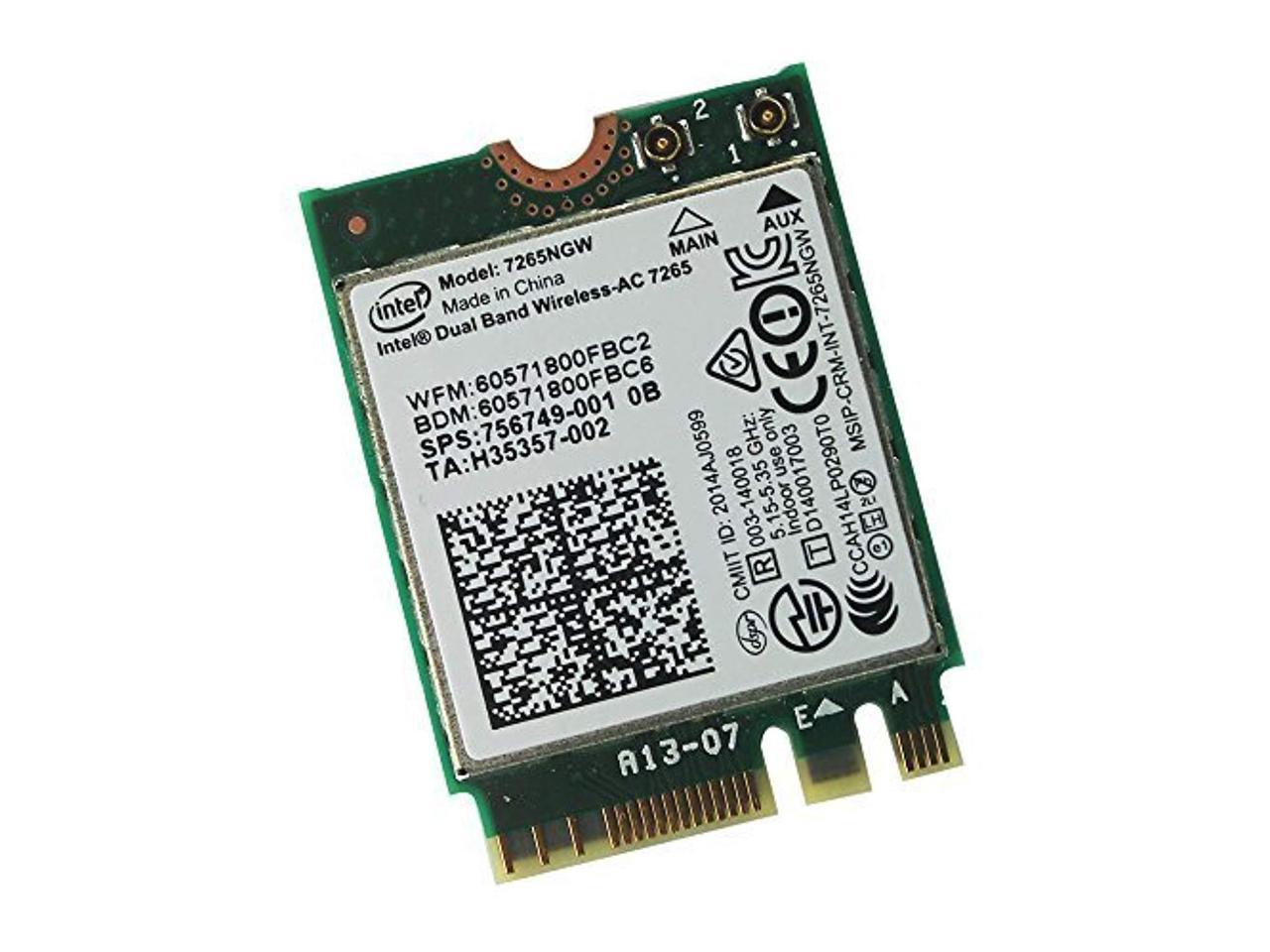

- #Intel dual band wireless ac 7265 running slow 1080p#
- #Intel dual band wireless ac 7265 running slow series#
The lower power usage means that there is more headroom for the CPU to keep the clock speeds higher when all cores are active, and it shows a great result here compared to the Haswell-U series parts.

Multithreaded is where the new 14nm process can really shine. Broadwell-U does well here, and though the single core scores show that the i5-5200U is a bit slower than the Acer's i7, and especially the XPS 15 with it's higher TDP part, there is a nice bump up from the i5-4200U in the Lenovo Yoga 2 Pro.
#Intel dual band wireless ac 7265 running slow 1080p#
The higher resolution model has more work to do on these and scores a bit behind the 1080p model, but overall the new XPS 13 scores quite well on these types of workloads.Ĭinebench tests the CPU's ability to render a scene. Creative is for media and entertainment creation and is more demanding than the Home test.

The Home benchmark runs through what the typical home user would do: web browsing, gaming, and photo editing. PCMark 8 from Futuremark runs through a variety of tests, and many of the test feature OpenCL support. If you would like to compare it against any other device we have tested, please use our online database, Bench. For comparison, I will graph it against several of last year’s Haswell-U parts, the Atom based HP Stream 11, and the Dell XPS 15, which has a higher wattage quad-core CPU and discrete GPU. Performance Graphsįor our performance workloads, we set the device to High Performance and then run through some benchmarks to cover a wide range of workloads. This should give a slight bump in GPU power over Haswell, and there may be some other minor differences in the GPUs. The outgoing Haswell parts had only 20 EUs. On the 15 watt Core parts, this change results in more execution units (EUs) per GPU, with the HD5500 in the XPS 13 having 23 EUs on the Core i3 model and 24 on the Core i5 and i7. Second, contrary to the CPU architecture, Intel has been iterating the GPU on every new processor. Because this is basically the same CPU architecture, performance gains will be secondary to the reduction in power consumption. Ticks are die-shrinks of the previous “Tock”, which is an architecture update, in this case Haswell. This is what is called a “Tick” on the Intel Tick-Tock roadmap. This brings a lot of advantages in terms of power consumption. The big changes with Broadwell-U over Haswell-U are two things.įirst, Intel has moved to the 14nm process, refining their 3D FinFET design. For a complete look at the launch, check out Ian’s coverage here. The XPS 13 is our first look at a notebook with Broadwell-U, which was launched concurrently with this and several other laptops at CES.


 0 kommentar(er)
0 kommentar(er)
